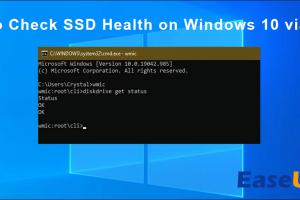Mastering SSD Maintenance: Comprehensive Guide to Checking SSD Health

-
Quick Links:
- Understanding SSDs
- Importance of SSD Health
- Signs of SSD Failure
- Tools to Check SSD Health
- Step-by-Step Guide to Checking SSD Health
- Case Studies
- Expert Insights
- Maintaining Your SSD
- FAQs
Understanding SSDs
Solid State Drives (SSDs) have revolutionized computer storage with their speed and reliability. Unlike traditional Hard Disk Drives (HDDs) that use mechanical parts, SSDs store data on flash memory, allowing for faster access and improved performance. However, like all technology, SSDs can experience wear and tear over time.
Importance of SSD Health
Regularly checking the health of your SSD is essential for ensuring your data remains safe and your system operates smoothly. An unhealthy SSD can lead to data loss, decreased performance, and unexpected shutdowns, making it crucial for users to be proactive.
Signs of SSD Failure
- Frequent crashes or system freezes
- Slow read/write speeds
- File corruption or loss
- Unrecognized SSD by the system
- Warning messages from the operating system
Tools to Check SSD Health
There are several tools available for checking SSD health, each offering unique features and insights:
- CrystalDiskInfo: A free tool that provides detailed information about your SSD, including temperature, health status, and SMART attributes.
- Samsung Magician: Designed specifically for Samsung SSDs, this software offers performance benchmarks and health checks.
- SSD-Z: A lightweight tool that provides a wealth of information about your SSD, including its health and performance metrics.
- HWMonitor: This tool monitors multiple system sensors, including SSD health, and provides real-time data.
Step-by-Step Guide to Checking SSD Health
Checking your SSD health can be done in a few simple steps:
Step 1: Download a Health Check Tool
Choose one of the tools mentioned above and download it from the official website.
Step 2: Install the Software
Follow the installation instructions provided by the software. Most SSD health check tools are straightforward to install.
Step 3: Run the Application
Open the application and allow it to detect your SSD. This may take a few moments, depending on your system.
Step 4: Analyze the Results
The tool will provide you with information regarding your SSD’s health status, including SMART attributes, temperature, and any potential issues.
Step 5: Take Action Based on Findings
If your SSD health status is critical, it's advisable to back up your data immediately and consider replacing the SSD.
Case Studies
Consider the following case studies that illustrate the importance of SSD health checks:
Case Study 1: Business Data Loss
A small business relied on an SSD for its primary data storage. Without regular health checks, the SSD failed, resulting in significant data loss. Post-incident, they implemented a routine health check procedure, preventing future occurrences.
Case Study 2: Gaming Performance Issues
A gamer noticed lag and stuttering in games. After checking the SSD health, they found it was operating at 70% health. A simple firmware update and optimization improved the performance significantly.
Expert Insights
Experts recommend checking your SSD health regularly—ideally every few months. They emphasize the importance of being aware of the signs of SSD failure, as early detection can save both time and data.
Maintaining Your SSD
To prolong the life of your SSD, follow these maintenance tips:
- Keep at least 20% of the drive free to optimize performance.
- Update SSD firmware regularly.
- Avoid defragmentation, which can wear out the SSD.
- Use TRIM commands to optimize storage.
- Monitor temperature and ensure proper ventilation.
FAQs
Here are some common questions and answers related to checking SSD health:
1. How often should I check my SSD health?
It’s recommended to check your SSD health every few months to ensure optimal performance.
2. What is a SMART status?
SMART (Self-Monitoring, Analysis, and Reporting Technology) is a monitoring system that helps predict hard drive failures.
3. Can I recover data from a failing SSD?
Data recovery from a failing SSD can be challenging, but specialized services may help recover some data.
4. What does a failing SSD sound like?
Unlike HDDs, SSDs have no moving parts and typically do not produce noise. Signs of failure are often software-related rather than audible.
5. Can I use SSDs in RAID configurations?
Yes, SSDs can be used in RAID configurations, but ensure compatibility and adequate cooling.
6. Is SSD maintenance different from HDD maintenance?
Yes, SSDs require different maintenance practices, such as avoiding defragmentation.
7. What happens if my SSD is full?
A full SSD can lead to degraded performance. It's important to keep some free space available.
8. Should I enable TRIM?
Yes, enabling TRIM helps maintain SSD performance over time.
9. Do SSDs have a lifespan?
Yes, SSDs have a finite lifespan, typically measured in terabytes written (TBW).
10. Can overheating damage my SSD?
Yes, excessive heat can lead to premature failure of SSDs, so proper cooling is essential.